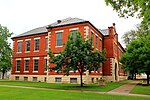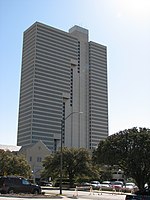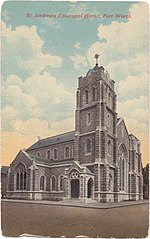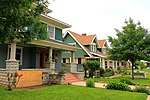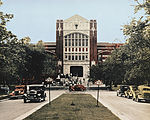Fort Worth Public Market

Fort Worth Public Market is a historic farmers' market and retail building located in Fort Worth, Texas. The building was designed by B. Gaylord Noftsger, a native of Oklahoma City. Developer John J. Harden, also from Oklahoma, spent $150,000 on the building, which opened to the public on June 20, 1930. The building is noted for its terracotta tile and multi-colored tile roof. The main tower is decorated with terracotta columns and pilasters. The building housed various businesses such as grocers, bakers and butchers. At its peak, the Public Market had space for 145 farmer and vendor stalls and 30 permanent retail shops. The building was purchased in 1944 by R.C. Bowen of Bowen Properties; in 2010 a fire destroyed a shed behind the main building. In 2012 the building was purchased by oil and gas mogul Bob Simpson, who sold the building to MC Estates in 2014. It was named a Texas Historical Landmark in 1980 and added to the National Register of Historic Places on July 5, 1984.
Excerpt from the Wikipedia article Fort Worth Public Market (License: CC BY-SA 3.0, Authors, Images).Fort Worth Public Market
Henderson Street, Fort Worth
Geographical coordinates (GPS) Address Nearby Places Show on map
Geographical coordinates (GPS)
| Latitude | Longitude |
|---|---|
| N 32.744166666667 ° | E -97.337777777778 ° |
Address
Henderson Street 1400
76102 Fort Worth
Texas, United States
Open on Google Maps



